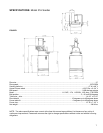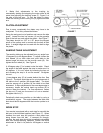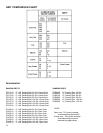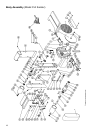
13
TYPES OF OPERATIONS
Flat surface sanding is demonstrated in Figure 16,
where the major surface is sanded in a flat plane.
Edge sanding is a common type of long surface sanding
that can be done using the fence. See Figure 17.
Edge sanding and flat surface sanding can also be done
with the belt in a vertical position, by using the fence
assembly as a table.
Miters and compound miter cuts can be sanded using
the table and the optional miter gauge (available from
your Powermatic dealer). Special fixtures can also be
designed to use on the table for circular and form
sanding.
Contour sanding can be done using the idler pulley with
the end guard swung down. See figure 18.
CAUTION: Always swing the end guard
back in position and fasten it down
immediately after the completion of any operation
that required the guard to be moved out of position.
CAUTION: Keep in mind that abrasive sanding
develops heat, so burns can occur on wood if
you try to remove material too fast. With metal, it
may be necessary to have a container of water
nearby to keep the workpiece cool enough to hold it
by hand.
Flat surface and contour sanding can be done in the
horizontal, 45-degree, and vertical position of the belt
arm. To change position, pull out the shot pin and swing
arm to the desired position, then release shot pin (Figure
11).
MAINTENANCE
Make periodic or regular inspections to ensure that your
sander is properly adjusted, that all screws are tight, the
belts in good condition, that dust has not collected in the
motor or electrical enclosures and there are no loose or
worn electrical fittings or wiring.
LUBRICATION
All bearings used on the Model 31 Sander are sealed for
life and require no lubrication.
Monthly lubrication schedule:
The idler slide, Figure 19, and table trunnion (B-Fig. 8),
with good quality, non-hardening grease.
The table clamp screw (A-Fig. 8 on page 9) and belt arm
shot pin (B-Fig. 11 on page 10) with SAE No. 10 oil.
!
!


















